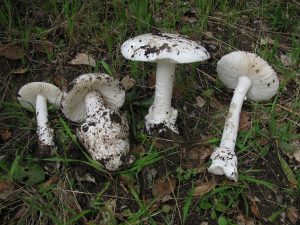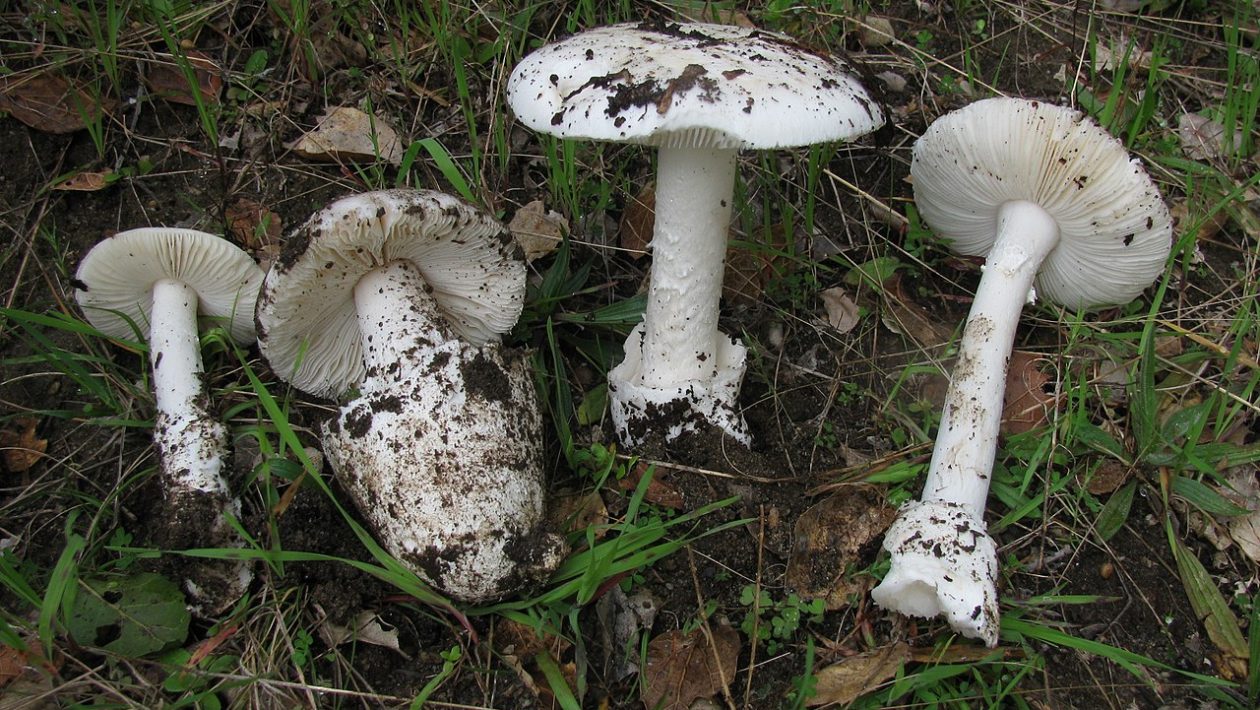
Two of the most toxic mushrooms are among those appearing in East Bay Regional Park District’s parks, and the agency has issued a warning about collecting wild mushrooms that can be fatal if consumed.
Dave Mason, Public Information supervisor, issued the warning Wednesday.
“Each year, mushrooms come out after the first fall rains,” he said. Those rains began Nov. 20.
“Mushrooms are ecologically important and can look beautiful, but some of them contain dangerous toxins,” he said.
Two of those toxin-containing fungi are the “death’s cap,” or Amanita phalloides, and the “Western Destroying Angel,” or Amanita ocreata, which Mason called two of the world’s most toxic mushrooms.
Those two types contain amatoxins, olecules that inhibit cellular metabolism in many animals, he explained.
In mammals, they first affect the liver and kidneys after they’re ingested, he said in the warning. However, symptoms often don’t appear for up to 12 hours after consumption.
Those symptoms are severe gastrointestinal distress, and can include liver and renal failure if the victim isn’t treated promptly.
“Both the death cap and t Western destroying angel grow near oak trees,” said Trent Pearce, East Bay Regional Park District naturalist who is based in Tilden Regional Park. Pearce documents the fungi in the park district.
“They can be lethal to both humans and pets if consumed,” Pearce said.
“Collecting mushrooms in East Bay Regional Parks is not allowed,” Mason said in his advisory. “The Park District urges the public to be safe and to be knowledgeable about toxic mushrooms.”

In addition, he said, those who bring pets to the parks also must be vigilant, Mason said.
“Dog owners should keep a close watch on their dogs during the winter months, he said. “Pet owners should contact a veterinarian immediately if they suspect their pet may have eaten a toxic mushroom.”
The warning described the death cap as a medium to large mushroom that typically has a greenish-gray cap, white gills, a white ring around the stem and a large white sac at the base of the stem. Besides growing under oaks, it also has been found near other hardwoods.
This species is not native to California, but was introduced accidentally to North America through the roots of European cork oaks, and it slowly is spreading throughout the West Coast, the warning said.
The Western destroying angel also is medium to large sized with a creamy white cap, white gills, a white ring around the stem that disappears as the fungus ages, and a thin white sac at its base, the warning said.
It is native to California, grows exclusively near oaks and fruits from late winter into spring, the warning said.
The death cap and Western Destroying Angel mushrooms are responsible for most cases of mushroom poisonings in California, Mason’s warning said. However, deadly toxins also can also be found in Galerina and Lepiota mushroom species, both which occur in the Bay Area as well, his advisory said.
Information about mushrooms will be available at the East Bay Regional Parks’ annual Tilden Fungus Fair, Sunday, Feb. 3, 2019, at Tilden Nature Area’s Environmental Education Center, 600 Canon Drive, Berkeley.





